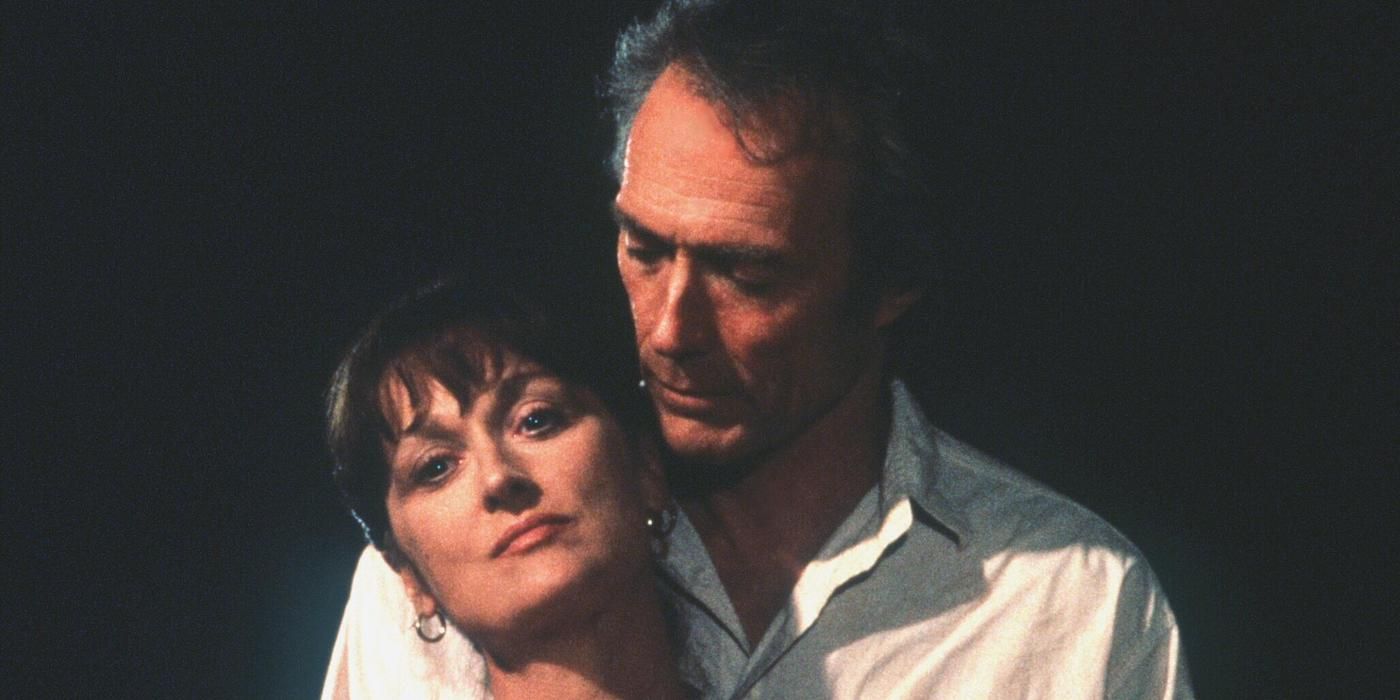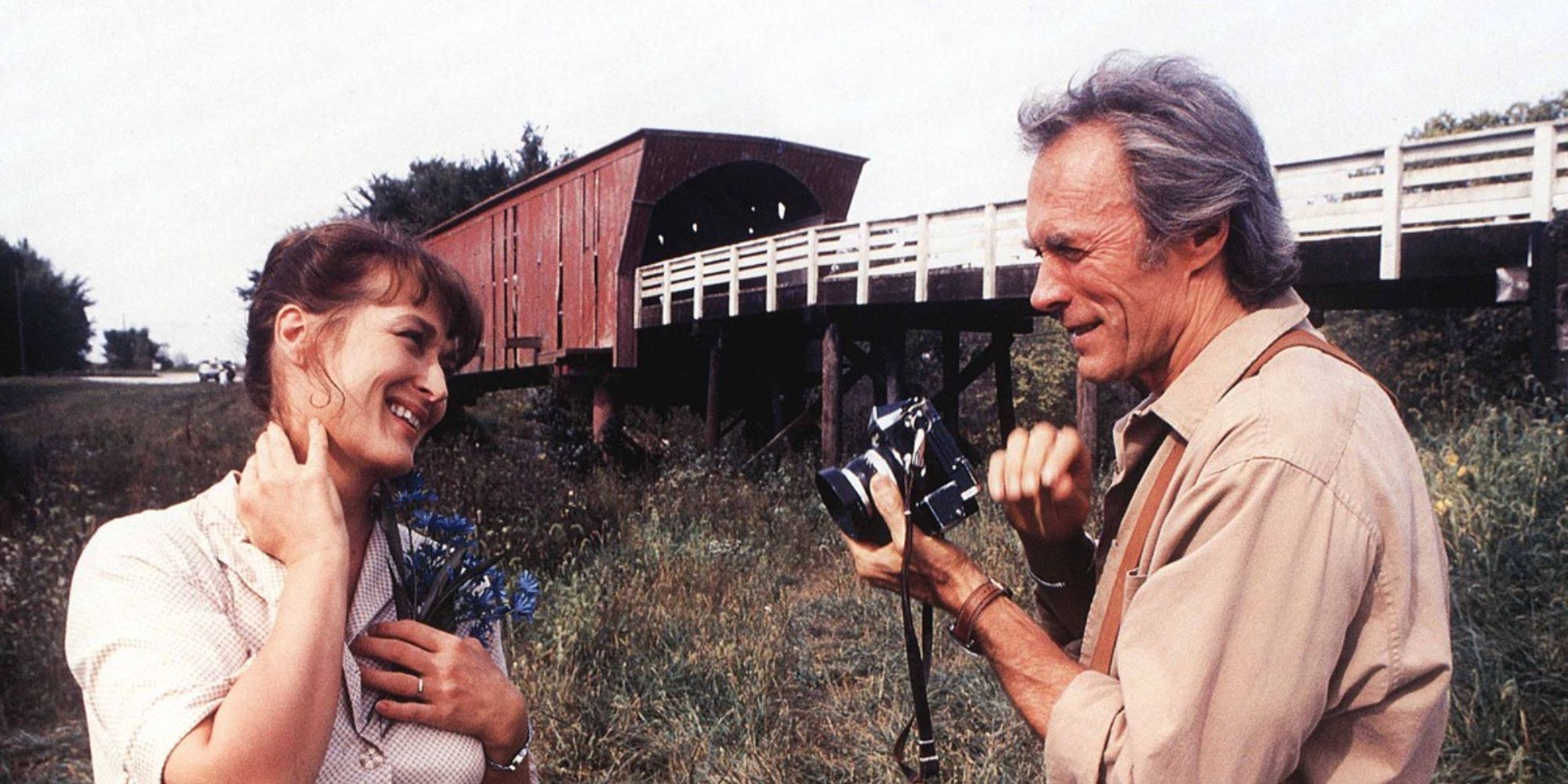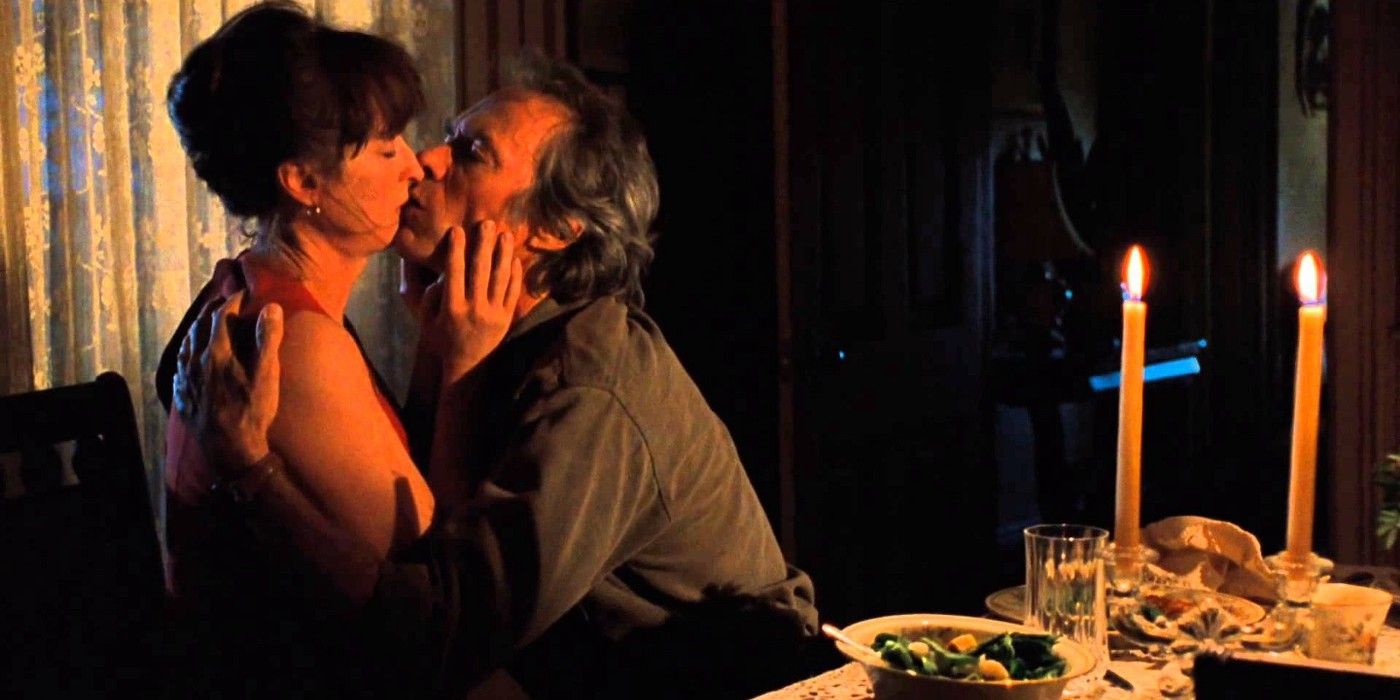It goes without saying that the question of “why does everything have to be gay nowadays?” gets leveled at queer people in our current era more so than it probably should. Of course, if you’re asking why something, presumably a piece of media, “has to be” gay or queer, you’re likely missing the point. It’s a devout privilege that visibility for the queer community has come as far as it has to this stage, where openly queer characters are genuinely included in scripts and not solely as a punchline. But that doesn’t mean there aren’t still thousands of miles left to go in the visibility battle. As a result, kids who grow up queer will often gravitate towards heterosexual stories with subtext that allows them to see themselves between the lines.
'The Bridges of Madison County's Journey From Page to Screen
For me, one of those stories was The Bridges of Madison County. First published as a novel by Robert James Waller in 1992, the book became a runaway bestseller, helped by the likes of Oprah Winfrey who hosted an episode of her talk show from its famed Iowa bridges. It quickly became the somewhat Peyton Place of its era, selling 60 million copies and prickling the cultural feathers of gatekeeping literary critics, who immediately question the literary merit and validity of a love story marketed almost entirely to middle-aged women. Adapted into a film directed by Clint Eastwood and starring him and Meryl Streep as the leads, the screen adaptation was equally successful, generating one of Streep’s many Academy Award nominations for Best Actress. The film was interpreted as giving substance to a novel that had sorely lacked it; what was considered overly sensational literary sludge was now lauded as intelligent movie passion.
What Is 'The Bridges of Madison County' About?
On its surface, there’s nothing necessarily overtly queer about Bridges. It follows Francesca Johnson (Streep), an Italian war bride who subsequently became a farmwife on the outskirts of Winterset, Iowa. Her life is almost textbook of women in post-war America, who were groomed to seek sole fulfillment in the home as wives and mothers. We first meet Francesca in 1965, when her emotionally distant husband and their teenage children leave town for four days to attend a neighboring state fair. By chance, she meets National Geographic photographer Robert Kincaid (Eastwood) when he pulls into their farm to ask for directions. What follows is an intense affair that begins subtly and ends tragically.
There might not be anything remarkable about Francesca feeling trapped in a domestic role thrust upon her, something that Betty Friedan had coined just two years earlier as “the problem that has no name.” But it’s rather that her entire identity outside the home has been stripped for so long that, only upon meeting Kincaid, does she remember what it feels like to be alive outside of her lonely farm and gossipy small town. She arguably feels seen in a way she might never have been before, presumably raised from birth with the notion that she must marry well for her life to begin. But as it is Francesca who initiates much of the beginnings of her romantic affair with Robert, she’s tired of playing by the rules. With him, she can figuratively and literally let her hair down. To be seen and understood is one thing we crave most in life. And that’s what makes Bridges so queer.
'The Bridges of Madison County' Validated My Femininity
I first watched The Bridges of Madison County in the tenth grade, having uncovered an old VHS copy of my mother’s in the attic. I vaguely remember her referring to herself as a fan of both the book and the film, so I heavily gravitated toward the stories of women, since it was a place where my queerness felt seen and comforted. So I watched Bridges as I did with all movies of its caliber as a teenager; alone with my feelings, the way I liked it best. At the time I told myself it was merely just an amazing love story that made me legitimately feel something that prompted me to keep returning to it. But as I’d soon learn, pieces of media that strike a chord with me do so for very intimate and personal reasons, so there must have been a deeper meaning to Bridges swiftly becoming an all-time favorite. It would only be once I started coming to terms with myself as a queer person did I learn that other kids also grew up finding themselves getting along better with their friends’ moms than the friends, as many gay kids do. It was this sense of validation for my femininity that I was searching for, and I found it when I watched movies like The Bridges of Madison County.
As much as the film was largely successful due to effective marketing among middle-aged women who might’ve recognized themselves or their mothers in Francesca Johnson, Bridges started to acquire a small and quiet following as something of a gay cult classic into the 21st century. As much as it mirrored the internal struggles of a generation of postwar women in a culture that sought to keep them alone in the kitchen, there’s something to be said for the ways in which Francesca and Robert’s romance mirrors the struggles of the queer community in the 20th century.
Francesca Wants to Experience True Love and Be Seen as a Human Being
Finding true and fast love with each other amidst inconvenient circumstances, the pair must cultivate their extramarital affair in secret, lest Francesca suffers a fate similar to that of Lucy Redfield (Michelle Benes), a local woman who slept with a married man. But Francesca tells Robert she wants to see him and not to worry, because she’s not. She’d rather spend time with someone who sees her as a full human being and risk a scandal than return to her lonely life as an underappreciated wife and mother. But only towards the end of the film does she realize that it is impossible for her to enjoy the best of both worlds: There’s no way for her to leave her family and run away with Robert, as they will never survive the talk. When a woman makes a choice to get married and start a family, her life begins but it also stops. What she has with her husband Richard (Jim Haynie) will vanish if they are apart. “I’ll only say this once, I’ve never said it before, but this kind of certainty comes but just once in a lifetime,” are Robert’s last words to her.
Francesca and Robert's Affair Is Queer-Coded
It’s also impossible to fully equate the true love found in a heterosexual extramarital affair to the centuries of persecution faced by queer people in the name of love, but as far as societal expectation and scandal, Robert and Francesca’s romance gets more queer-coded every time I watch it. It’s as if I could close my eyes and imagine Francesca as a straight-passing man in 1965 who finds his true love with another man, but the gender politics of their small-town world and culture at large would just never allow it to end happily. The same way that she deliberately befriends Lucy Redfield later on, a person with whom she feels free to just think about what she had with Robert, is equally queer-coded. It leads me to imagine any number of real-life queer love stories that ended just as tragically, marked by ignorance and misunderstanding.
This isn’t necessarily the message that Bridges seeks to convey, but with the breadcrumbs of visibility that queer people have only begun seeing in the last few decades, it leads us to search for it in the confines of certain niches of heterosexual stories. I’ve yet to find myself in some kind of lifetime-spanning, star-crossed romance, but watching Robert and Francesca’s story has somehow always made the possibility real of such a love perhaps existing for me and anyone else who felt excluded from a cultural narrative. It would obviously be more than welcome for queer characters to continue breaking their way into media now, but even when they don’t, something tells me that us queers will continue finding pockets of representation wherever we can, even on a farm in Iowa.



